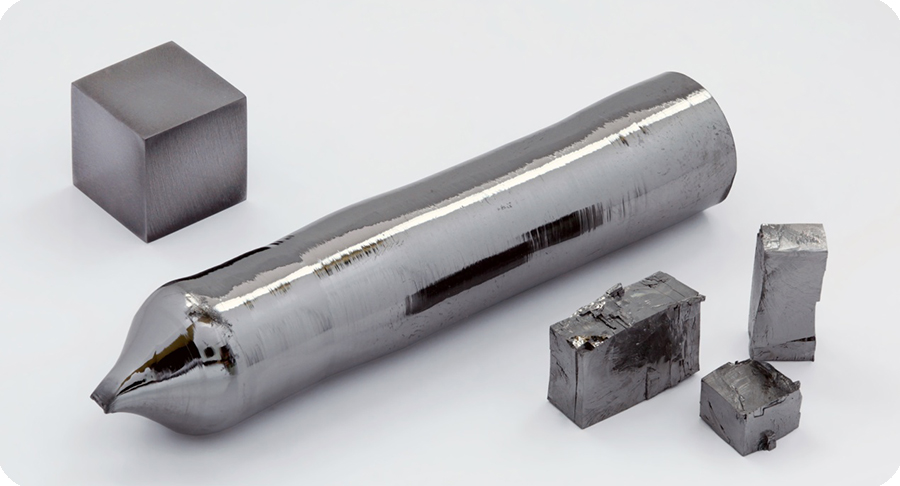Properties Of Tantalum
| Atomic number | 73 |
| CAS number | 7440-25-7 |
| Atomic mass | 180.95 |
| Melting point | 2 996 °C |
| Boiling point | 5 450 °C |
| Atomic volume | 0.0180 nm3 |
| Density at 20 °C | 16.60g/cm³ |
| Crystal structure | body-centred cubic |
| Lattice constant | 0.3303 [nm] |
| Abundance in the Earth's crust | 2.0 [g/t] |
| Speed of sound | 3400m/s (at r.t.)(thin rod) |
| Thermal expansion | 6.3 µm/(m·K) (at 25 °C) |
| Thermal conductivity | 173 W/(m·K) |
| Electrical resistivity | 131 nΩ·m (at 20 °C) |
| Mohs hardness | 6.5 |
| Vickers hardness | 870-1200Mpa |
| Brinell hardness | 440-3430Mpa |
Tantalum is a chemical element with symbol Ta and atomic number 73. Previously known as tantalium, its name comes from Tantalus, a villain from Greek mythology. Tantalum is a rare, hard, blue-gray, lustrous transition metal that is highly corrosion-resistant. It is part of the refractory metals group, which are widely used as minor components in alloys. The chemical inertness of tantalum makes it a valuable substance for laboratory equipment and a substitute for platinum. Its main use today is in tantalum capacitors in electronic equipment such as mobile phones, DVD players, video game systems and computers. Tantalum, always together with the chemically similar niobium, occurs in the mineral groups tantalite, columbite and coltan (a mix of columbite and tantalite, though not recognised as a separate mineral species). Tantalum is considered a technology-critical element.

Physical properties
Tantalum is dark (blue-gray), dense, ductile, very hard, easily fabricated, and highly conductive of heat and electricity. The metal is renowned for its resistance to corrosion by acids; in fact, at temperatures below 150 °C tantalum is almost completely immune to attack by the normally aggressive aqua regia. It can be dissolved with hydrofluoric acid or acidic solutions containing the fluoride ion and sulfur trioxide, as well as with a solution of potassium hydroxide. Tantalum's high melting point of 3017 °C (boiling point 5458 °C) is exceeded among the elements only by tungsten, rhenium and osmium for metals, and carbon.
Tantalum exists in two crystalline phases, alpha and beta. The alpha phase is relatively ductile and soft; it has body-centered cubic structure (space group Im3m, lattice constant a = 0.33058 nm), Knoop hardness 200–400 HN and electrical resistivity 15–60 µΩ⋅cm. The beta phase is hard and brittle; its crystal symmetry is tetragonal (space group P42/mnm, a = 1.0194 nm, c = 0.5313 nm), Knoop hardness is 1000–1300 HN and electrical resistivity is relatively high at 170–210 µΩ⋅cm. The beta phase is metastable and converts to the alpha phase upon heating to 750–775 °C. Bulk tantalum is almost entirely alpha phase, and the beta phase usually exists as thin films obtained by magnetron sputtering, chemical vapor deposition or electrochemical deposition from an eutectic molten salt solution.


